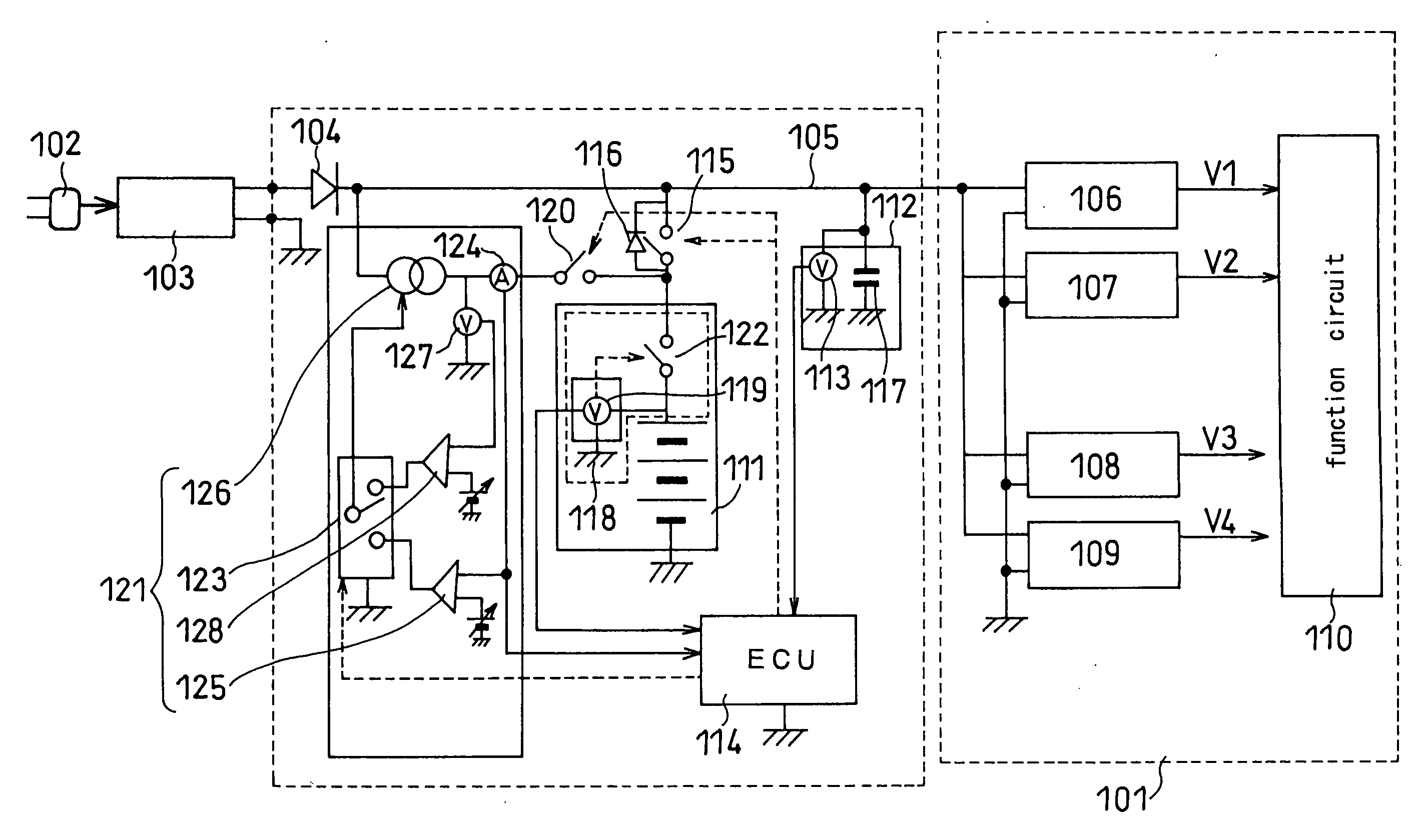Lithium ion secondary battery and charge system therefor
a lithium ion secondary battery and charge system technology, applied in secondary cell servicing/maintenance, cell components, cell component details, etc., can solve the problems of oxidation progress, battery deterioration, separator deterioration,
- Summary
- Abstract
- Description
- Claims
- Application Information
AI Technical Summary
Benefits of technology
Problems solved by technology
Method used
Image
Examples
example 1
[0068](a) Fabrication of Positive Electrode
[0069]Lithium cobalt oxide in an amount of 3 kg, as a positive electrode active material, 1 kg of #1320 (product name)(NMP solution including 12 wt. % of PVDF) manufactured by Kureha Corporation as an positive electrode binder, 90 g of acetylene black as a conductive material, and an appropriate amount of NMP are stirred with a double-armed kneader, to prepare a positive electrode material mixture slurry. The slurry was applied on both sides of an aluminum foil with a 15 μm thickness as a positive electrode current collector, except for a positive electrode lead connection portion, and dried. The dried film was rolled with rollers to form a positive electrode material mixture layer. The thickness of the electrode plate comprising the aluminum foil and the positive electrode material mixture layers was controlled at this time to 160 μm. Afterwards, the electrode plate was cut to give a width that can be inserted in a battery can of a cylindr...
example 2
[0080]A cylindrical lithium ion secondary battery was fabricated in the same manner as Example 1, except that the cut-off-voltage of charge was set to 4.4 V to control the theoretical capacities of the positive electrode and the negative electrode.
example 3
[0081]A cylindrical lithium ion secondary battery was fabricated in the same manner as Example 1, except that the cut-off-voltage of charge was set to 4.5 V to control the theoretical capacities of the positive electrode and the negative electrode.
PUM
 Login to View More
Login to View More Abstract
Description
Claims
Application Information
 Login to View More
Login to View More - R&D
- Intellectual Property
- Life Sciences
- Materials
- Tech Scout
- Unparalleled Data Quality
- Higher Quality Content
- 60% Fewer Hallucinations
Browse by: Latest US Patents, China's latest patents, Technical Efficacy Thesaurus, Application Domain, Technology Topic, Popular Technical Reports.
© 2025 PatSnap. All rights reserved.Legal|Privacy policy|Modern Slavery Act Transparency Statement|Sitemap|About US| Contact US: help@patsnap.com


